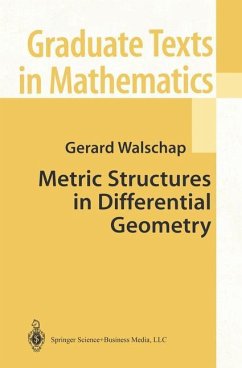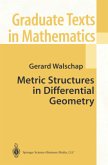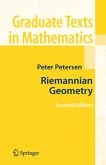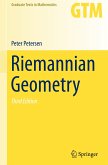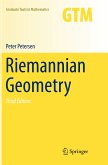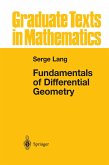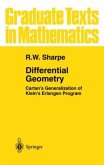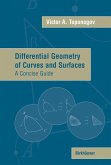This text is an elementary introduction to differential geometry. Although it was written for a graduate-level audience, the only requisite is a solid back ground in calculus, linear algebra, and basic point-set topology. The first chapter covers the fundamentals of differentiable manifolds that are the bread and butter of differential geometry. All the usual topics are cov ered, culminating in Stokes' theorem together with some applications. The stu dents' first contact with the subject can be overwhelming because of the wealth of abstract definitions involved, so examples have been stressed throughout. One concept, for instance, that students often find confusing is the definition of tangent vectors. They are first told that these are derivations on certain equiv alence classes of functions, but later that the tangent space of ffi.n is "the same" n as ffi. . We have tried to keep these spaces separate and to carefully explain how a vector space E is canonically isomorphic to its tangent space at a point. This subtle distinction becomes essential when later discussing the vertical bundle of a given vector bundle.
From the reviews: "The book gives an introduction to the basic theory of differentiable manifolds and fiber bundles ... The book is well written. The presentation is clear, detailed and essentially self-contained. This book is suitable for senior undergraduate and graduate students. It can be used for a course on manifolds and bundles, or a course in differential geometry." (M. Burkhardt, Zeitschrift für Analysis und ihre Anwendungen, 1, 2005) "This text is an introduction to the theory of differentiable manifolds and fiber bundles ... provides a comprehensive overview of differentiable manifolds ... concepts are illustrated in detail for bundles over spheres ... This book can be used for a one-semester course on manifolds or bundles, or a two-semester course in differential geometry." (L'enseignement mathématique, 50:1-2, 2004) "This book is based on the author's graduate-level lecture notes. ... One of the strengths of this book is the fact that the author manages in a 220-page volume to cover important themes in Riemannian geometry and fiber bundles. ... The book contains some nice examples ... . The topics are well-closed and the content is well-organized. ... This clearly written book is an excellent source for teaching a course in differential geometry ... . It is a worthwhile addition to any mathematical library." (Stere Ianus, Zentralblatt MATH, Vol. 1083, 2006) "This text should be an elementary introduction to differential geometry. ... The style is rather concise and many facts are shifted to 165 nontrivial exercises. The book is very well written and can be recommended to those who want to learn the topic quickly and actively." (EMS Newsletter, June, 2005) "This book is a carefully written text for an introductory graduate course on differentiable manifolds, fiber bundles and Riemannian geometry. ... This book is a thorough and insightful introduction to modern differential geometry with many interesting examples and exercises that illustrate key concepts effectively; it is highly recommended by the reviewer." (Thomas E. Cecil, Mathematical Reviews, Issue 2006 e) "In every mathematical library a number of introductory books to differential geometry can be found. They are all different in some aspect, but - at the same time - none presents all the concepts equally successfully to all the readers. So there is allways a need for new introductory books, and Walschap's book is a good one of these. ... The series of definitions, concepts and theories are punctuated by examples, remarks. Each section ends with exercises." (Árpád Kurusa, Acta Scientiarum Mathematicarum, Vol. 73, 2007)

